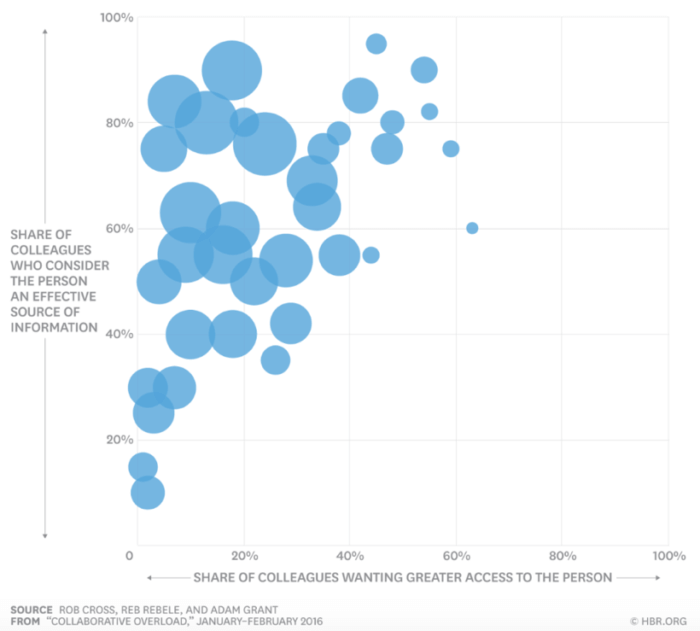Three ways to drive better collaboration within the workplace
As the modern workplace has become increasingly dynamic, digital and cross-functional, effective collaboration across individuals, teams, and companies has become increasingly important.
A Stanford research study from 2017 found that collaboration can improve workplace performance. Participants in the research who were primed to act collaboratively persevered at their task 64% longer than those working alone, whilst also reporting higher levels of engagement, lower fatigue levels, and a higher success rate.
Download our Business Resource – Digital marketing team structure
The aim of this template is for you can compare these structures to your current situation to help plan future changes.
Access the Digital marketing team structure
However, collaboration can also present challenges. A 2016 research paper from Harvard Business Review indicated that the amount of time managers and employees spend on collaborative work has ballooned. At many companies, people now spend about 80% of their time in meetings or answering colleagues’ requests.
Although the benefits of collaboration are well documented, the costs often go unrecognized. When demands for collaboration run too high or aren’t spread evenly, workflow bottlenecks and employee burnout occur. Leaders must, therefore, learn to better manage collaboration by mapping supply and demand, eliminating or redistributing work and incentivizing people to collaborate more efficiently.
In this article, I’m going to look at some of the things leaders and managers can do to harness the power of effective collaboration.

Strategies and tactics to leverage collaboration
Collaboration has become such an important way of working that it has inevitably become the focus of many different studies and research papers. It’s easy to get lost in all the analysis so below are three interesting and actionable conclusions from some of the most comprehensive research papers:
Define and clarify the meaning of ‘collaboration’
Collaboration is a very wide-ranging term and can mean different things to different people. It’s also viewed in different ways across companies and industries. It’s therefore important to define what collaboration means to you and to communicate this across your organization so that everyone is aligned on an agreed approach.
According to Heidi K. Gardner and Herminia Ibarra from Harvard Law School and London Business School respectively, clarifying what collaboration is (and what it isn’t) is the only way to combat common apprehensions about collaboration, which can sometimes be seen as inefficient, risky and political. Only after seeing collaboration’s value for yourself will you put in the effort required to seek out cross-disciplinary projects and hone the skills necessary to collaborate effectively.
Gardner and Ibarra define collaboration as:
“A way of working that attracts and involves people outside one’s formal control, organization, and expertise to accomplish common goals”
They go on to stress that understanding what collaboration is not is a crucial part of getting better at it:
- Collaboration is not a style
- Collaboration is not ‘cross-selling’
- Collaboration is not always the answer
Ensure work is distributed across the company or team
There is a danger in some companies that the distribution of collaborative work can become extremely lopsided. Research from Harvard Business Review showed that up to a third of value-added collaboration can come from only three to 5% of employees. Whilst these ‘super collaborators’ provide a huge amount of value, they can create a bottleneck if they are involved in too many collaborative projects. What’s more, they can suffer themselves, causing problems for the organization in the form of burnout and key person dependencies.
Data on leaders across 20 organizations show that those regarded by colleagues as the best information sources and most desirable collaborators have the lowest engagement and career satisfaction scores, as represented by the size of their bubbles:

Leaders must look at ways to redistribute work across the organization. Start by understanding the existing supply and demand via research: employee surveys, 360-degree feedback, and communications tracking. This will help identify how and where people are spending their time, e.g. in group meetings vs. solo work. The former may highlight people most at risk of collaborative overload.
Armed with this insight, leaders can support people in the following ways:
- Filter and prioritize requests - Overburdened helpers may not know how to prioritize what projects they should or shouldn’t work on. Give people permission to say ‘no’, introduce those looking for help to other people and dedicate time you do help to projects that are likely to energize you.
- Behaviour change - Reset norms regarding when and how to initiate email requests or meeting invitations. This can help free up time and enable employees to reassess what meetings really are important vs. ‘nice-to-haves’.
- Accountable freedom - Leaders can also encourage people to work autonomously and take action to make their own decisions rather than constantly check with senior leaders or stakeholders.
Understand role clarity and task ambiguity
When teams or individuals have decided to collaborate, there’s a common assumption that a clearly defined approach toward achieving a goal is essential. However, research from HBR has shown that collaboration improves when the roles of individual team members are clearly defined and well understood. When individuals feel that they can do a significant portion of their work independently, they innovate and find different ways to reach a specific goal.
If leaders do not provide clarity, time is wasted negotiating roles, protecting turf and indulging in office politics. The focus should instead be focused on the task at hand. In addition to this, when the path to achieving a goal is left ambiguous, team members are more likely to collaborate because they can use their imagination, initiative, and autonomy to find their own way.
Conclusion
Collaboration has become a modern business buzzword, but whilst there are drawbacks as a result of ‘collaboration overload’, effective collaboration can be one of the best tools at a business’s disposal. As business becomes increasingly global and cross-functional, silos are breaking down, connectivity is increasing and teamwork is seen as a key to organizational success.
But in order to unleash creativity and innovation within companies, we must first define what we mean by ‘collaboration’ and be clear on how we want individuals and teams to embrace this concept. Without clear guidance, we run the risk of creating confusion and inefficiencies.
Business leaders must also take time to identify how individuals and teams collaborate. Are there specific individuals who are ‘super collaborators’ and are we doing all we can to protect their time and energy to avoid burnout?







